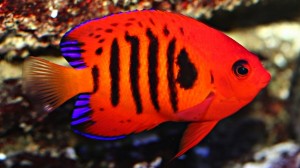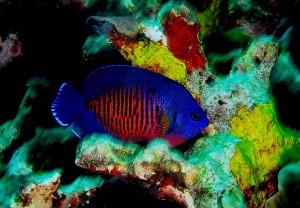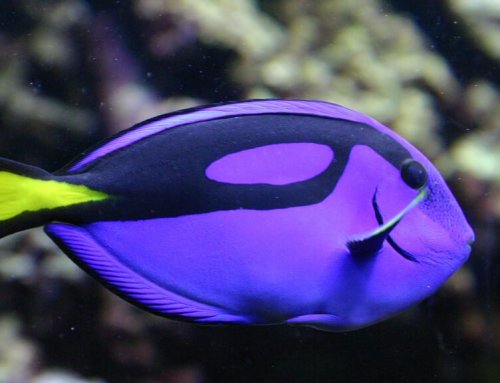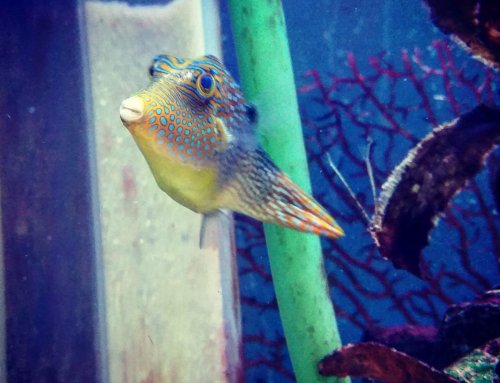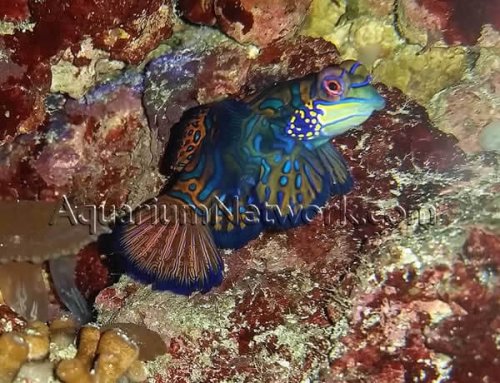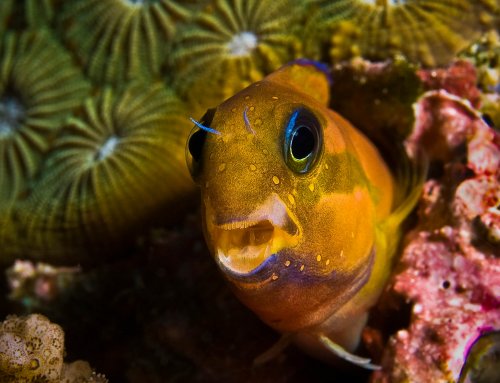Dwarf Angelfish (Centropyge angelfish)
Dwarf angelfish or Centropyge angelfish are from a large group of reef-dwelling marine ornamentals. They are known for their unique body shape, beautiful colorations, and territorial behavior. They are relatively small in size, with the largest species not exceeding 7.4 inches. In the wild, they typically live in groups with one dominant male and several females. Although they can be moderately aggressive, it is possible to stock them with other species. Even though they are a relatively hardy group of fish, consideration should be given to your tank’s water quality and design before stocking. In this article, we will look at the characteristics, tank setup, and diets for these unique fish which are often considered the most beautiful of all of the coral reef fish.
Characteristics
Dwarf angelfish are a very social group of fish and typically travel in groups while in the wild. They are protogynous hermaphrodites, meaning they are all initially females as adults but dominant fish will transform into males. These fish will not readily reproduce in an aquarium setting. They are considered to be moderately aggressive but this characteristic varies between the different species. They are relatively small when compared to the large marine angelfish, ranging between 2.4 to 7.4 inches in length as adults. The females can be difficult to identify but they typically have rounded, shorter fins. The most popular species in this genus is the flame angel, which are bright red with black stripes on both sides of their bodies.
Tank Setup
Dwarf angelfish prefer medium to large well established reef tanks. Live rocks can help to give your fish supplemental food as well as hiding places. The water temperature should remain between 72-77°F with a pH between 8.2-8.4. Besides live rocks, additional hiding places are a great idea for these fish, especially if stocking more than one dwarf angelfish in the same tank. Although they are a hardy fish, it is important to meet all of the water quality parameters before stocking these fish into your tank.
Fish Diet
Since dwarf angelfish are omnivorous, their diet in the wild includes both small invertebrates and algae. In an aquarium setting, it is important to offer a variety of different feeds. Blood worms and brine shrimp are recommended, but keeping live rocks in your tank with plenty of algae growth is also beneficial to your fish’s health.
Tankmates
It is possible to stock multiple dwarf angelfish but several considerations should be made. Stocking dwarf angelfish from the same species is typically not recommended. When stocking different species of dwarf angelfish, make sure to stock fish of varying sizes and introduce them into your aquarium at the same time. This will reduce their aggressive behavior towards one another. If you are stocking them in a tank with other fish, try to stock them last but be sure to consult with your aquarium specialist to make sure they are compatible with the other fish in your tank.
The Takeaway
Dwarf angelfish are a great addition to saltwater aquariums and are suitable for both intermediate and advanced aquarists alike. In order to keep these fish vibrant and healthy, it is important to maintain your tanks water quality and offer your fish a varied diet. These fish can be stocked with other dwarf angelfish and other species but recommendations and procedures should be followed to ensure they are properly introduced into your tank.
-Richard Bryant
Contributor for Aquarium Network

